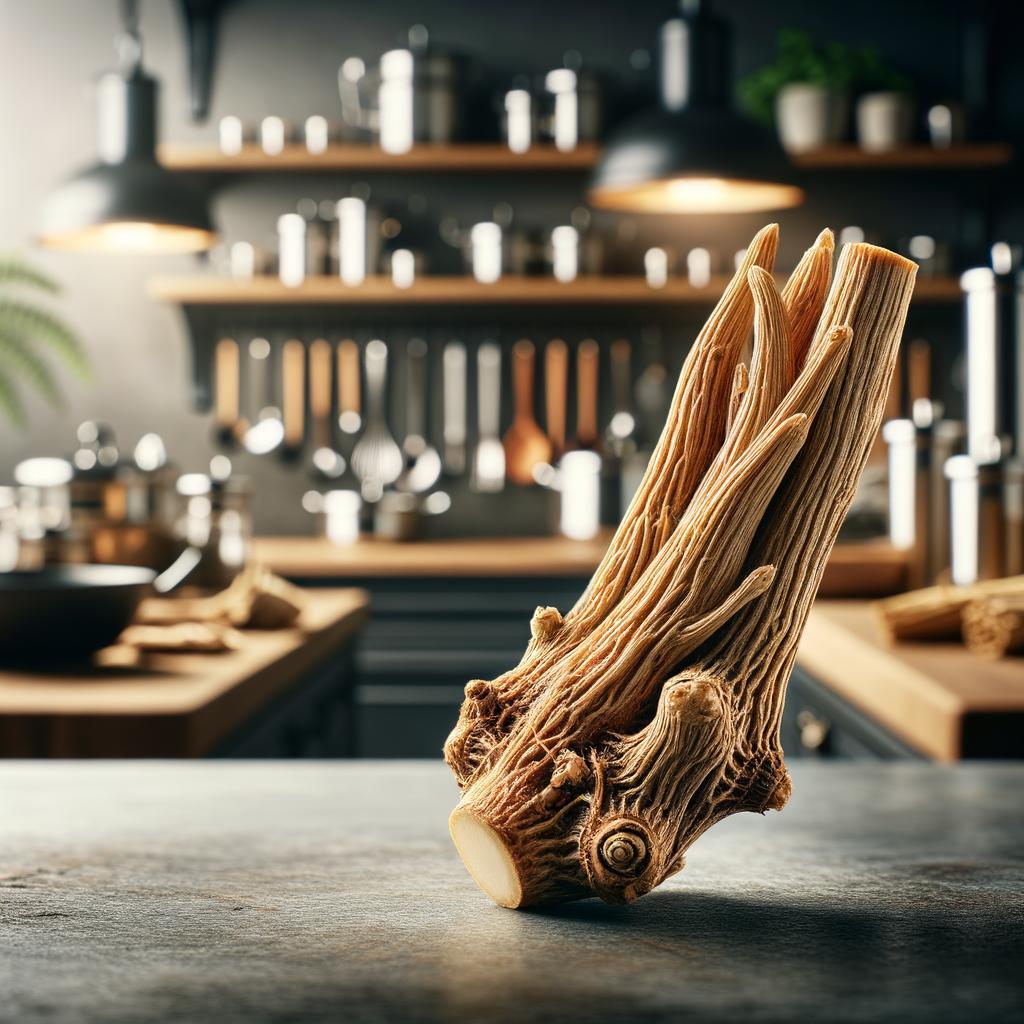Licorice Root

Description
Licorice root, known scientifically as Glycyrrhiza glabra, is a sweet and aromatic root that has been cherished for centuries. It has a rough, woody exterior with a warm, brown hue, while the inside boasts a yellowish color that's fibrous and moist. When it comes to flavor, licorice root is a delightful paradox. It's sweet, yet subtly spicy, with a complex profile that hints at notes of anise and fennel. The root's unique sweetness is not derived from sugar, but from a compound called glycyrrhizin, which is up to 50 times sweeter than sucrose.
Primary Uses
In culinary applications, licorice root is a versatile ingredient. It's often used to flavor candies, desserts, and beverages, especially in European and Middle Eastern cuisines. The root is typically steeped in boiling water to extract its flavor, much like tea. Beyond the kitchen, licorice root has been used in traditional medicine for thousands of years, notably in Ayurveda and Chinese medicine, to treat everything from coughs and colds to digestive issues and adrenal fatigue. Its cultural significance is deeply rooted in these ancient healing practices.
History
Licorice root has a rich and romantic history dating back over 4,000 years. It was found in great quantities in the tomb of King Tut, suggesting that the Egyptians believed in its healing powers in the afterlife. The ancient Greeks and Romans also valued licorice root for its medicinal properties, with the Roman naturalist Pliny the Elder recommending it as a cure for ulcers and the Greek physician Hippocrates praising its use for respiratory problems. Over time, licorice root's use has evolved, and it's now enjoyed worldwide not only for its medicinal properties but also for its unique, sweet flavor.
Nutritional Information
Nutritionally, licorice root is a powerhouse. It's packed with numerous beneficial compounds, including flavonoids and phytoestrogens, which have antioxidant, anti-inflammatory, and anti-cancer properties. The root is also a good source of B-vitamins, and minerals like iron, magnesium, and potassium. However, it's important to note that consuming large amounts of licorice root can lead to increased blood pressure due to the presence of glycyrrhizin. It's a testament to the old adage that even good things should be enjoyed in moderation. Compared to similar sweet ingredients like sugar, licorice root offers a host of nutritional benefits, making it a healthier choice for those seeking a touch of natural sweetness.

